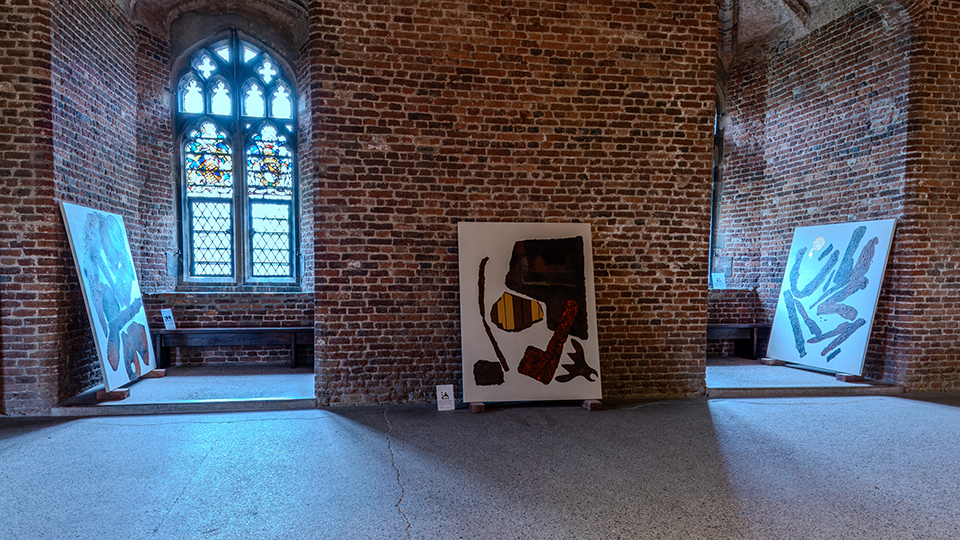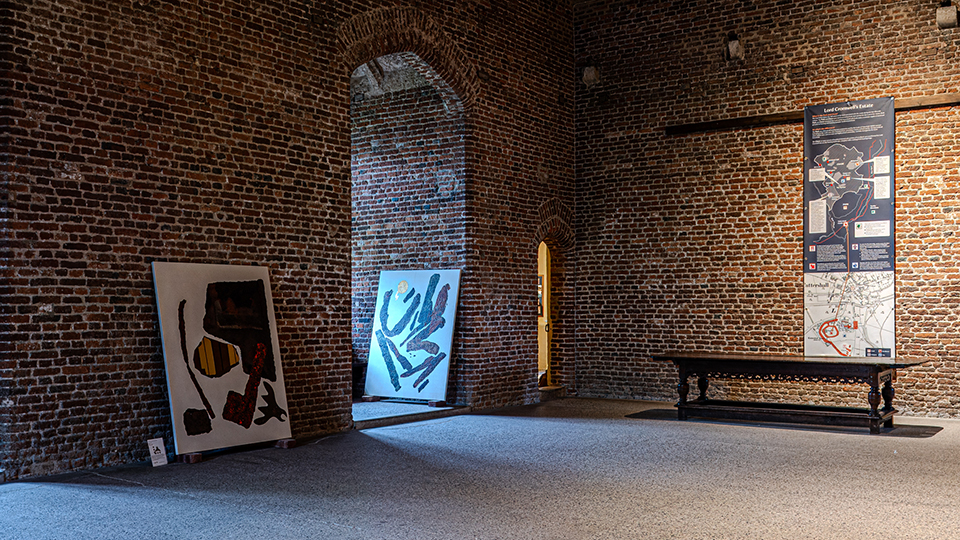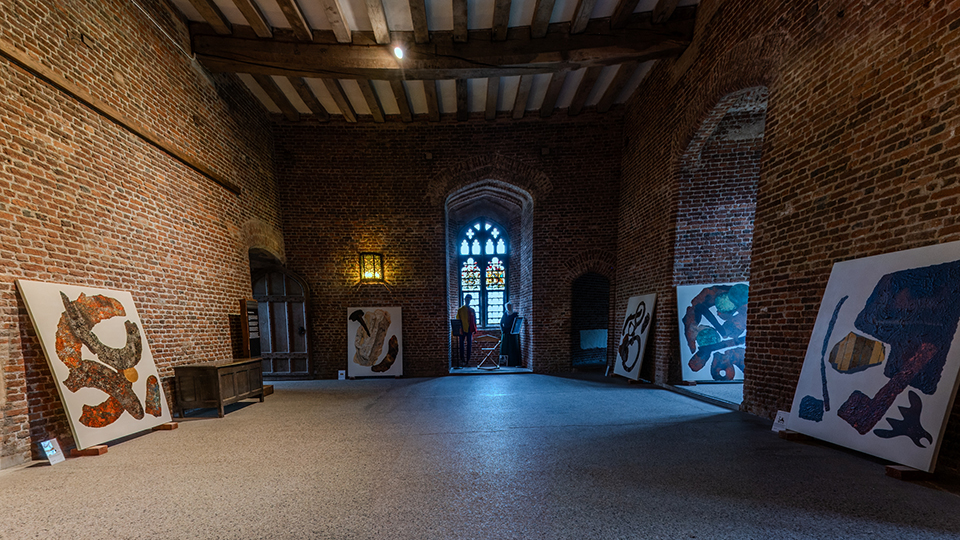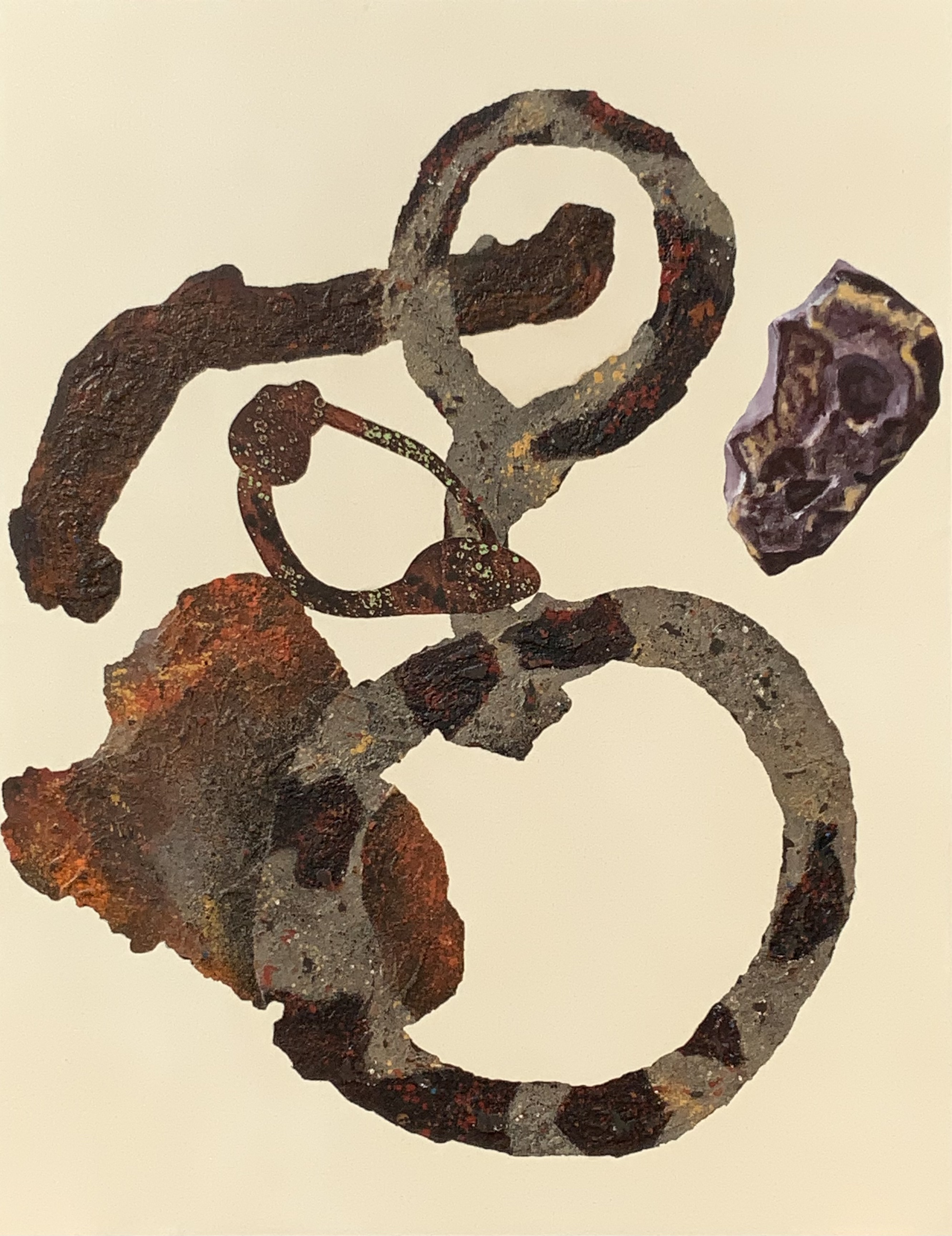 |
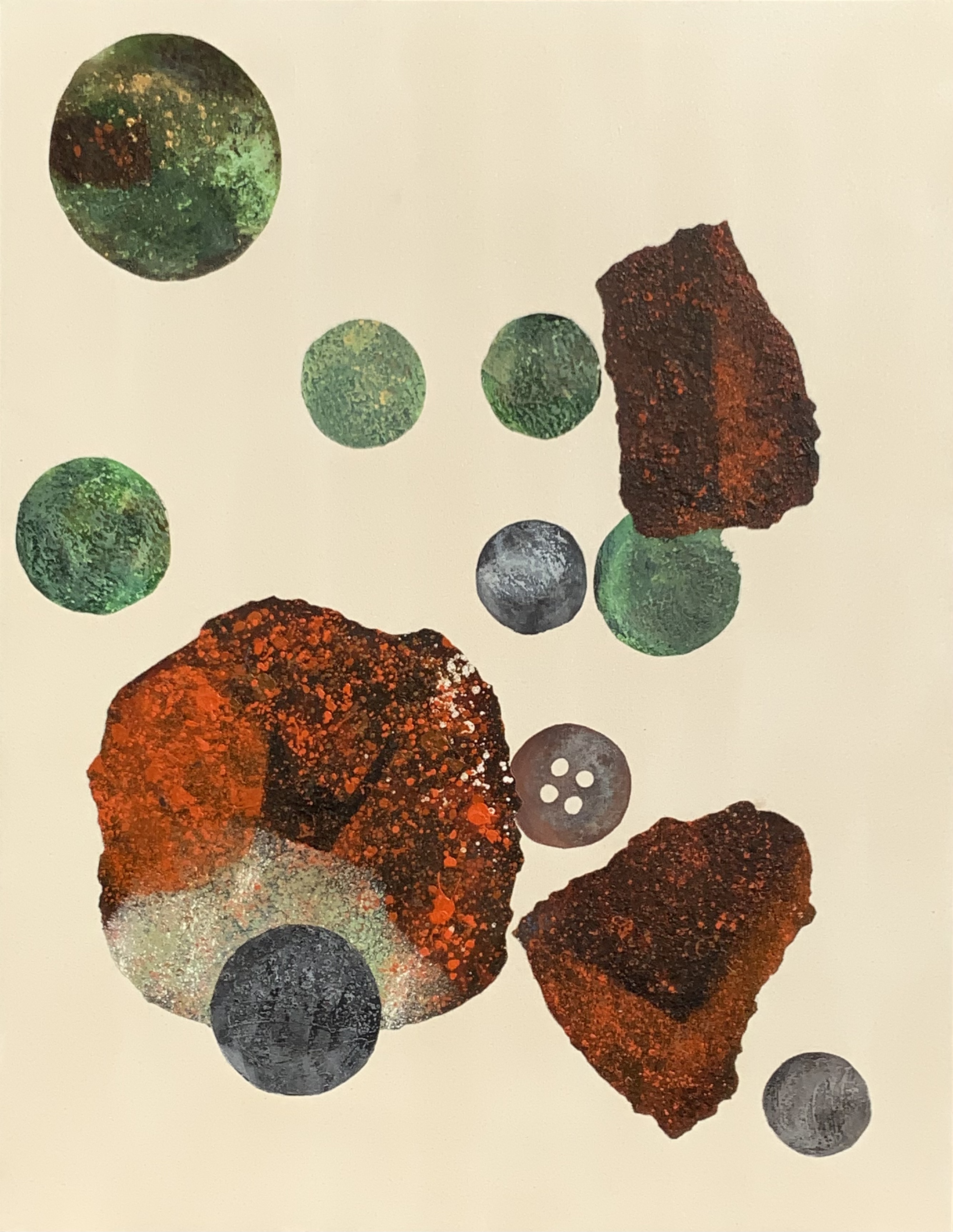 |
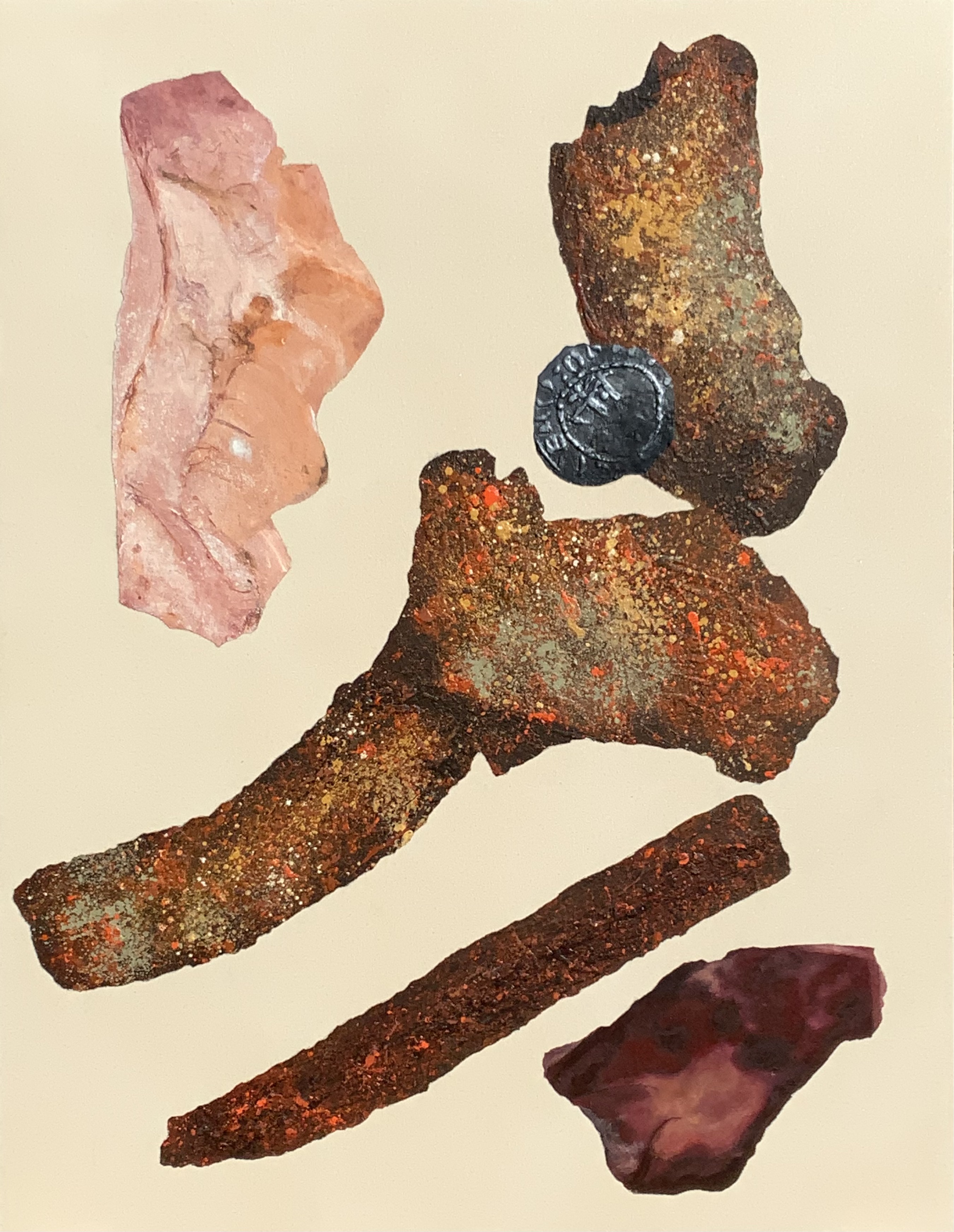 |
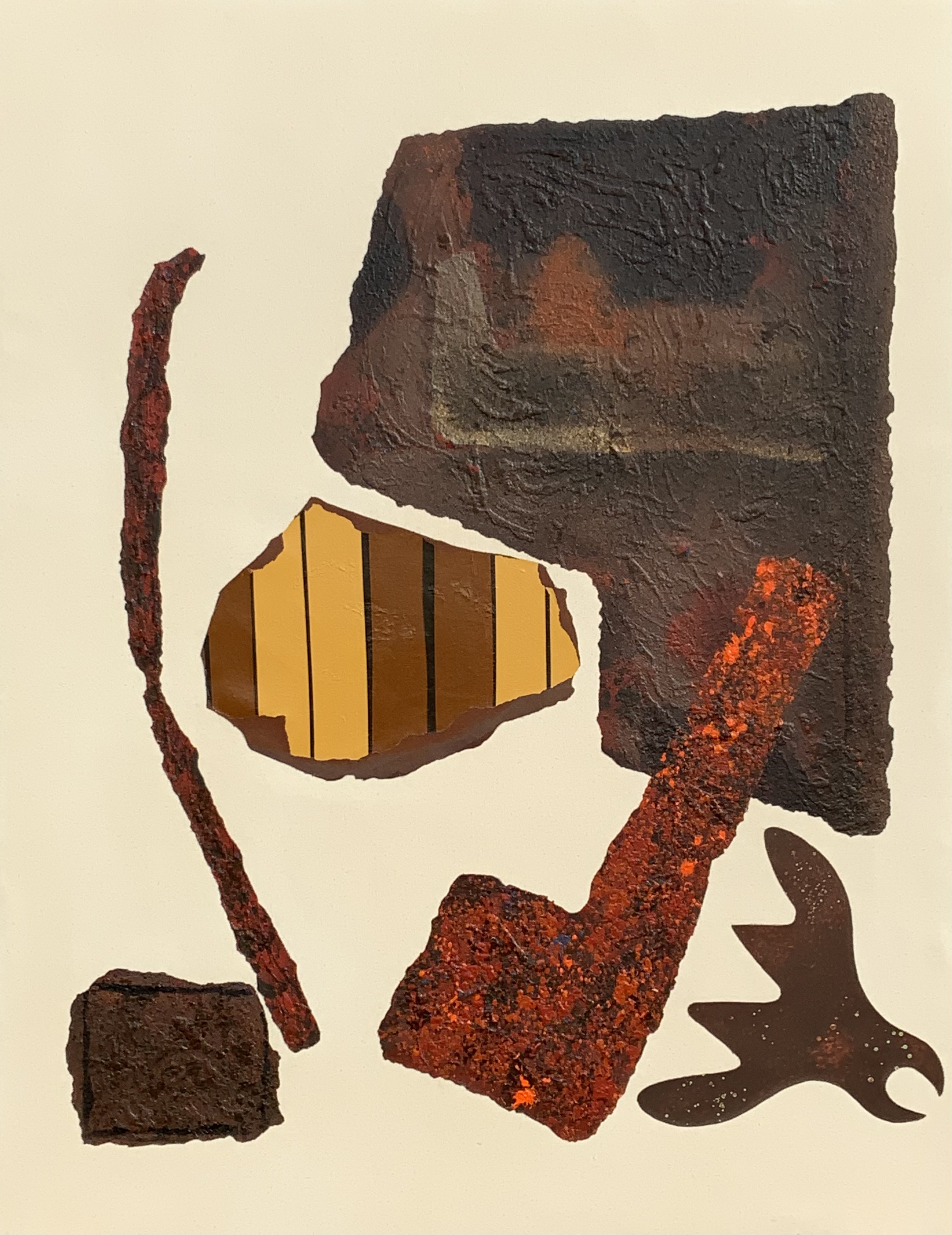 |
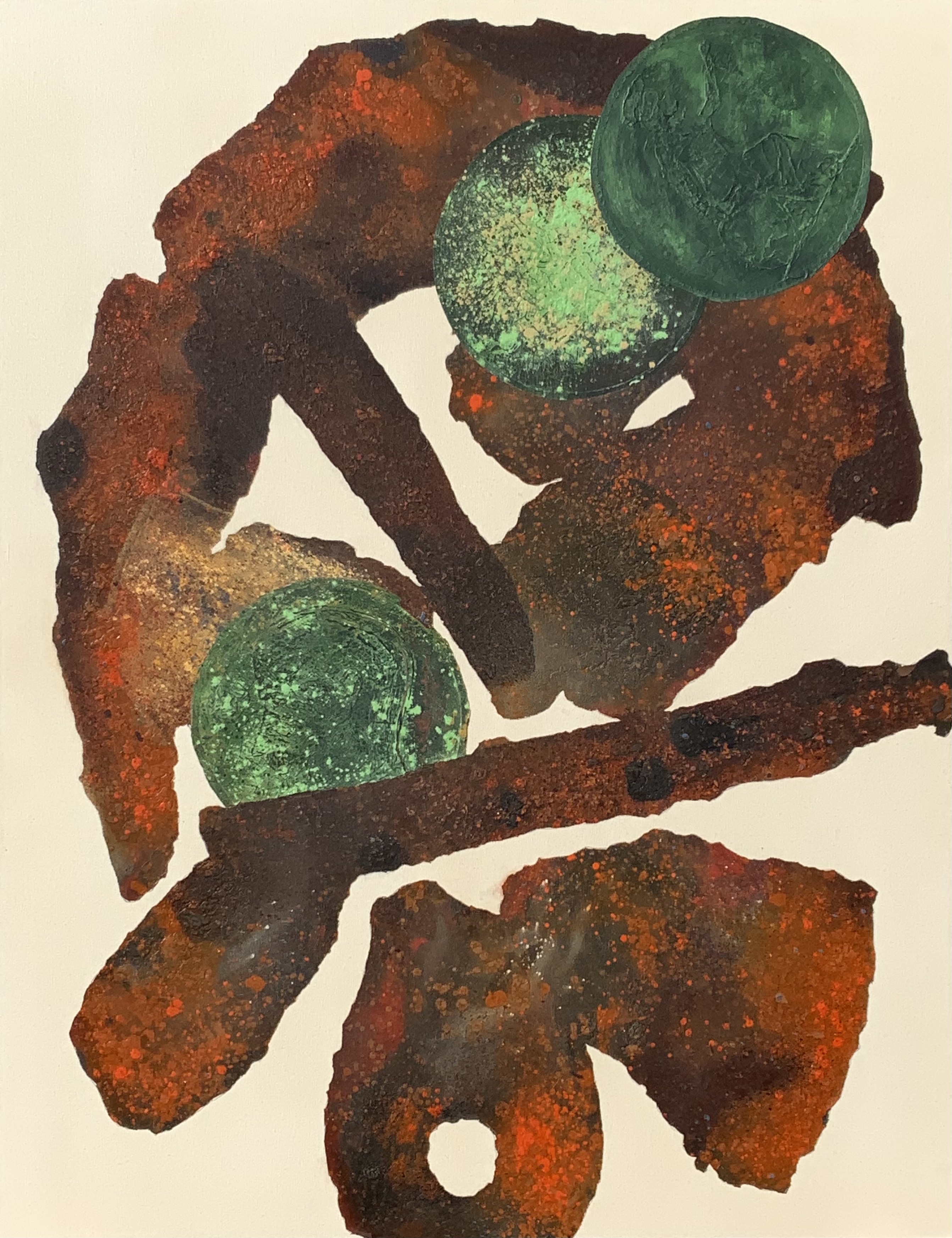 |
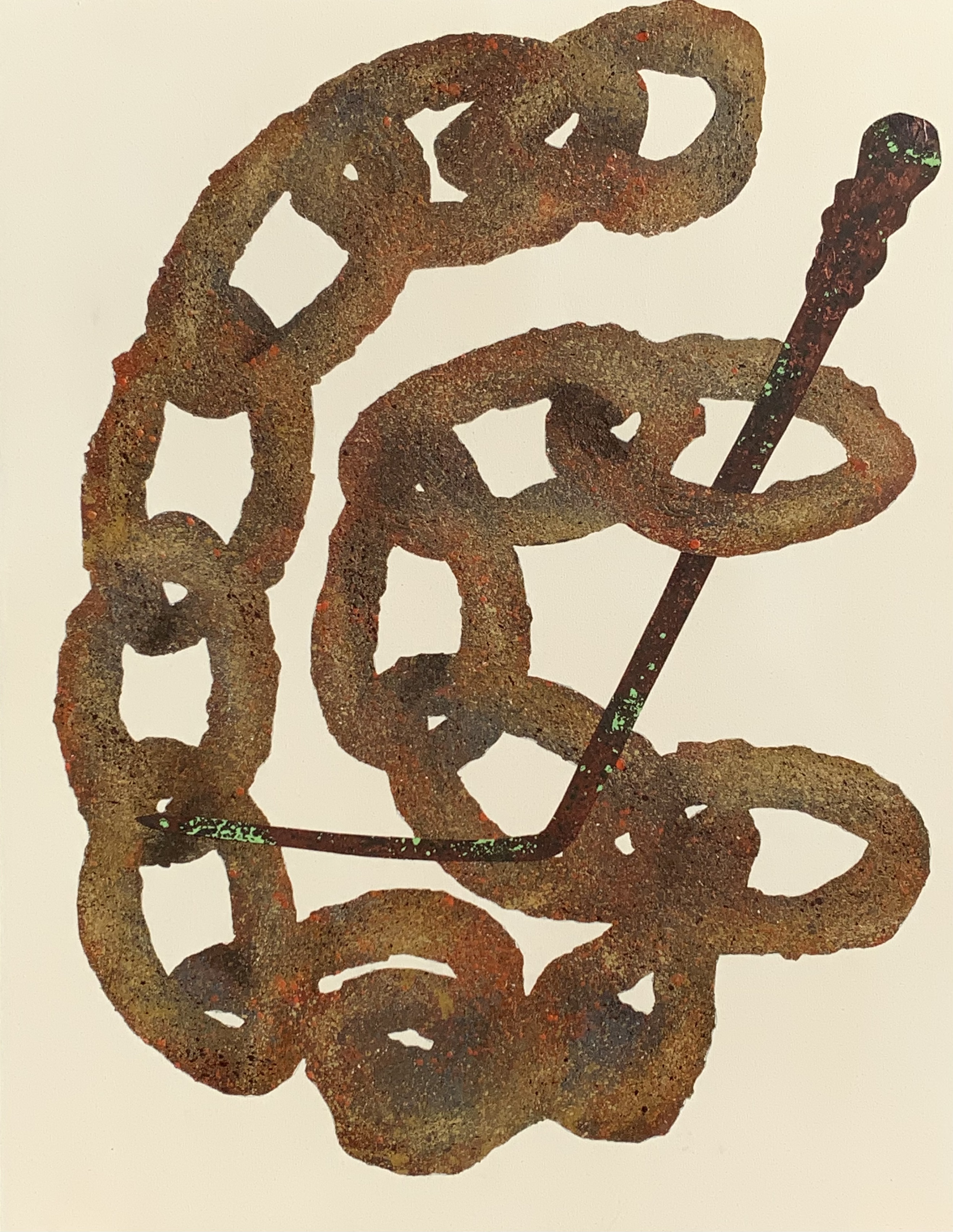 |
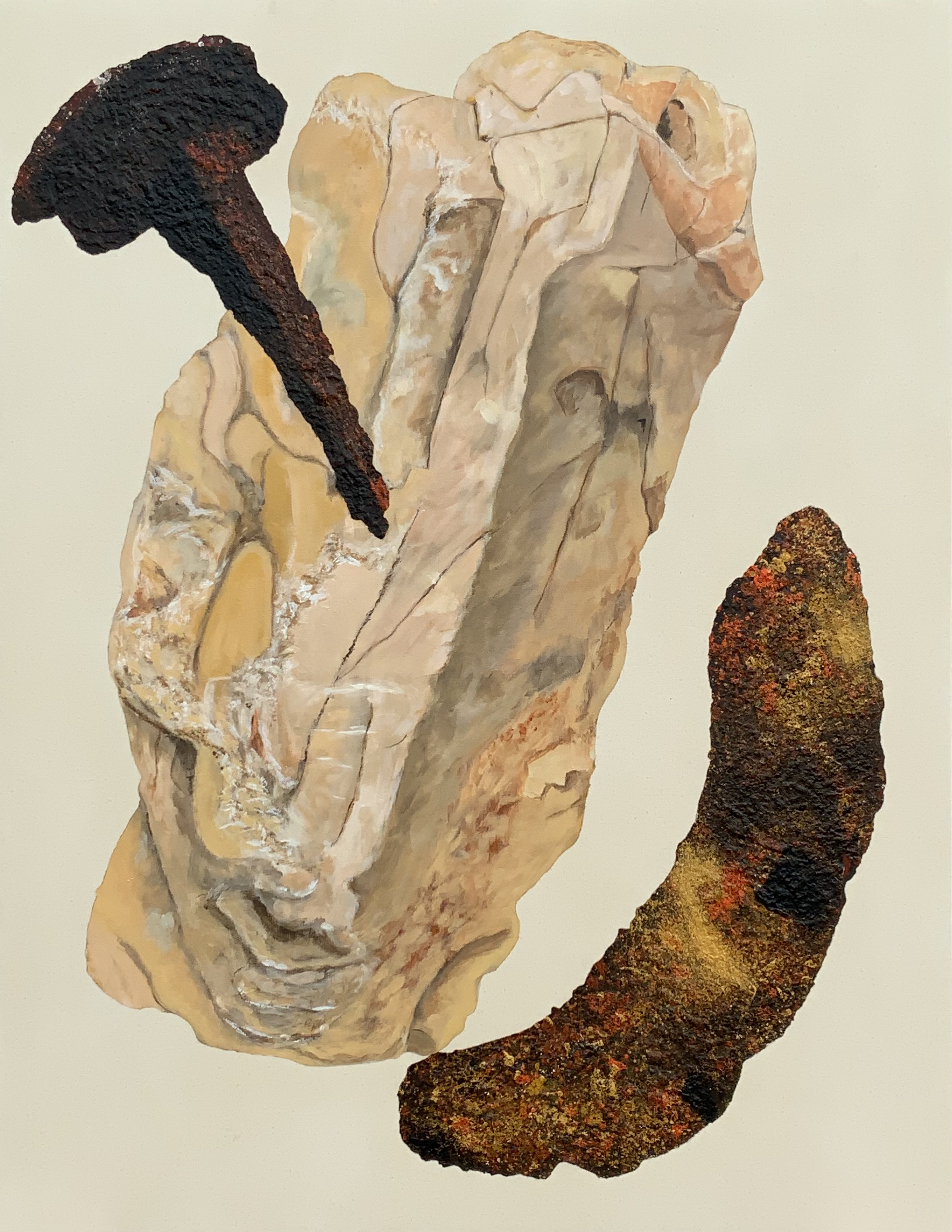 |
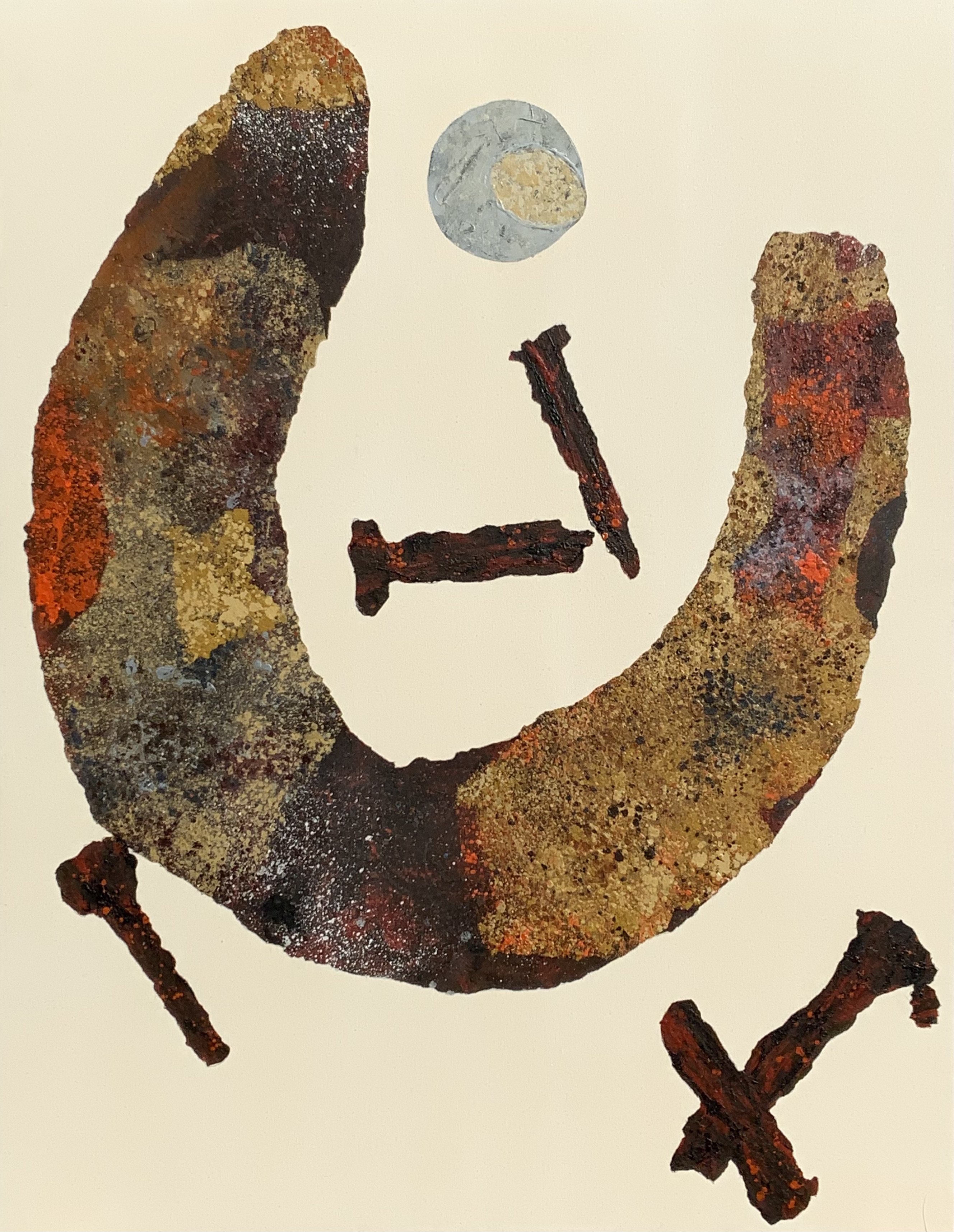 |
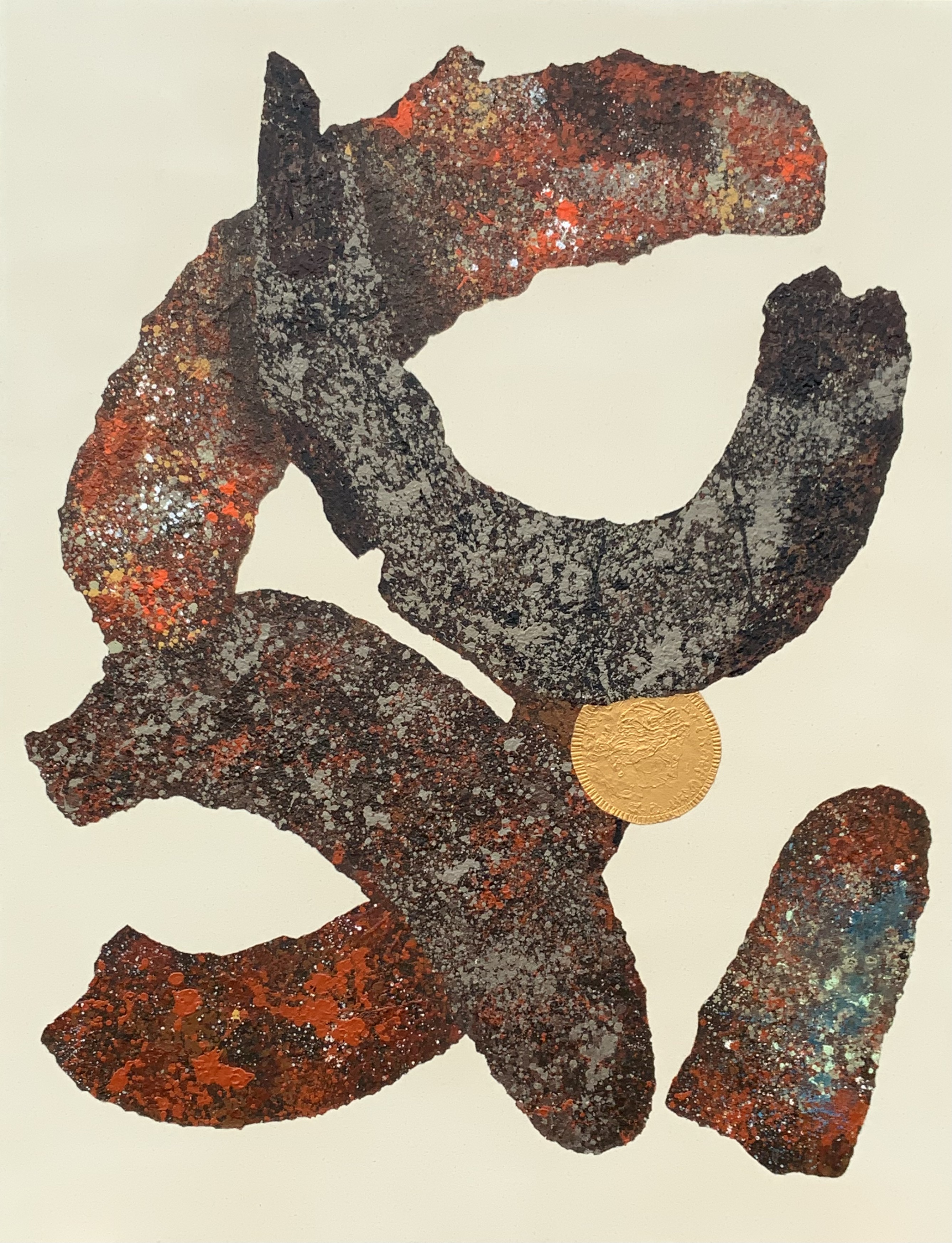 |
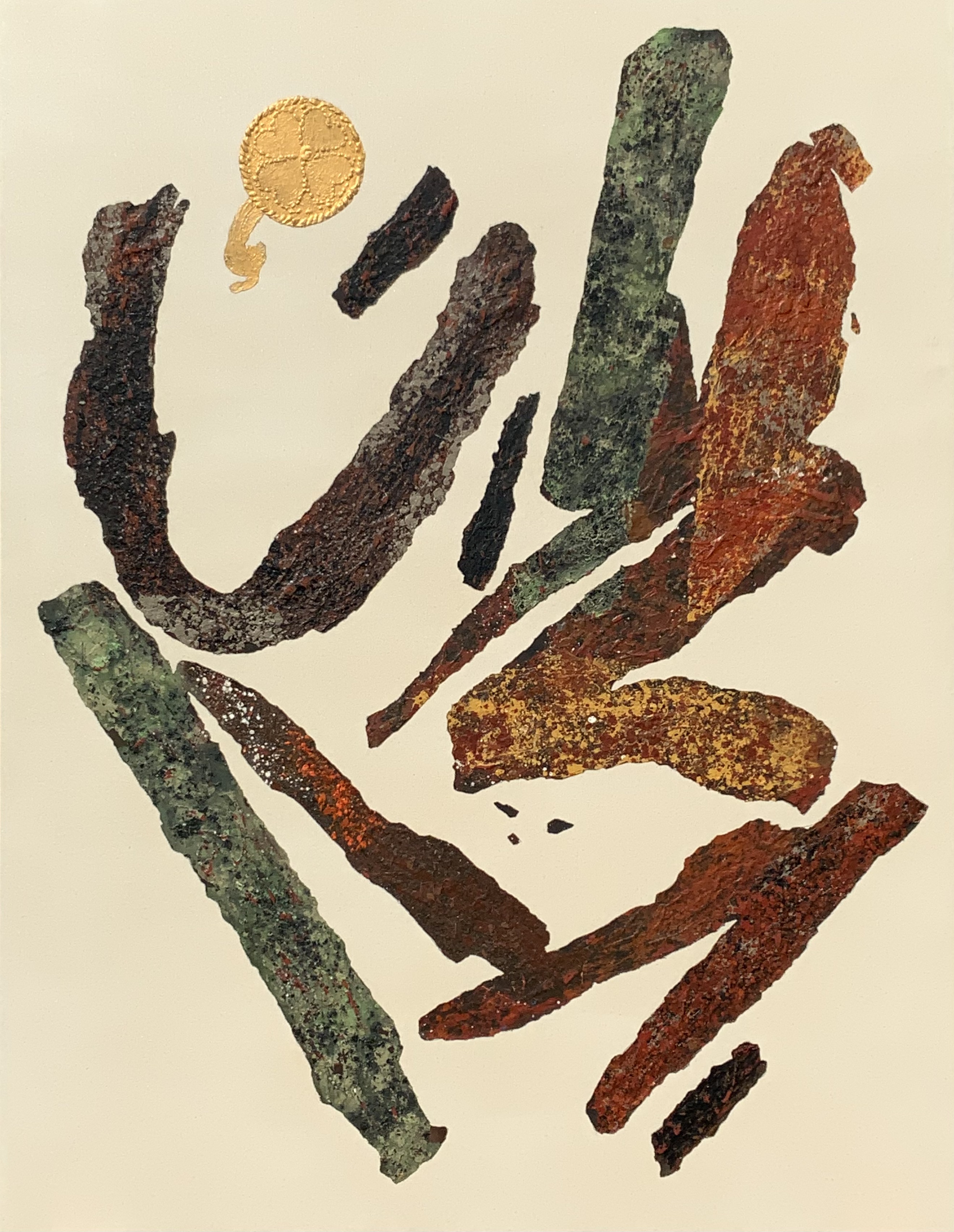 |
Click the images above for more details
Brick & Stone, Iron & Bronze.
Brick & Stone, Iron & Bronze is a series of paintings created on residency in the small farming community of Wood Enderby, Lincolnshire. Using the landscape at my feet as inspiration, the work focuses on the rubble and rocks that lay on the surface of the land, and the chunks of old iron, buttons, coins, and rare and intriguing artefacts found below.
Intended as a celebration of the British landscape and the rich historical narrative that forms our national identity, Brick & Stone, Iron & Bronze, literally digs through the layers of earth exposing evidence of our near and distant ancestors. Through these artefacts of the Celtic, Roman, Saxon, Viking, and Norman peoples, and those of our modern decedents, a story of constant occupancy and migration emerges about the land, and the notion of Britishness becomes a melting pot of cultures and stories.
As with all my art projects, Brick & Stone, Iron & Bronze is about the joy of painting through its use of shape, texture, and colour, about becoming immersed in a place, about being active in the landscape, but mostly about searching out stories in a hope that I might better understand my own position within the world and gain a better sense of my own belonging.
Exhibition dates: 1st - 30th June 2024
Tattershall Castle
37 Sleaford Road
Tattershall
Lincolnshire
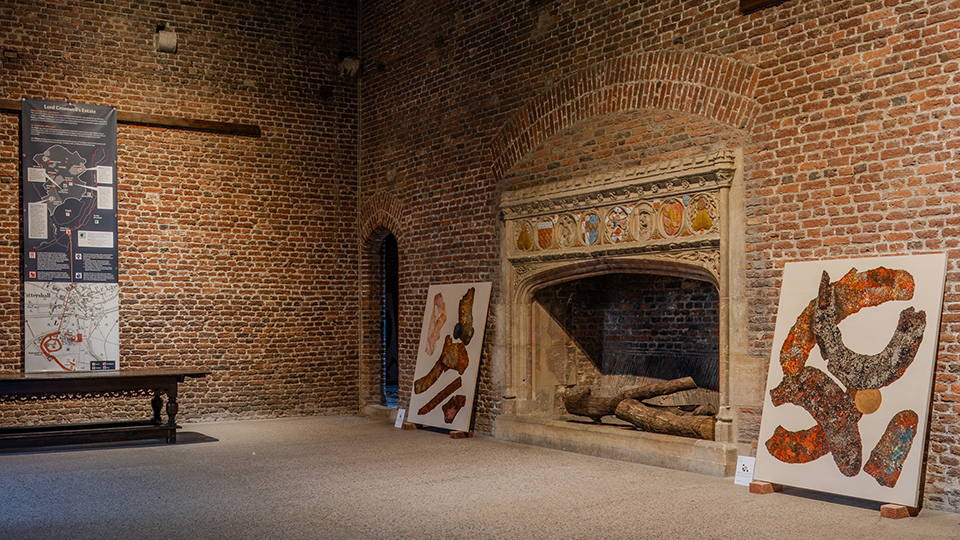
Brick & Stone, Iron & Bronze - Tattershall Castle, Lincolnshire.
Photographer: Mike Pounder |
Text was written by artist and curator Sean Williams, in response to Brick & Stone, Iron & Bronze. "I will never rest until I have danced the Gold Dance” Richard’s new body of work is based on the objects he has found with a metal detector in Lincolnshire. Metal detecting is the performative act to gather material for the work. The results are large-scale paintings with the imagery presented starkly, seemingly hovering in the indefinite space of the canvas, their form apparent from a distance, demanding closer inspection. The motifs are of unearthed coins, buttons and jewellery that Richard has uncovered and returned to the world above ground. They have been held by the land for too long. Richard has persuaded it to relinquish these charms so that they can tell their stories of the time and the place, of how they came to be where they are and of the people who made, gifted and traded them. Through them, we know so much more about the land, the people, the settlements and the societies. They live again, in a sense. In the paintings chunks of iron lie with more glittering trove. There is no hierarchy when things fall to the ground and are subsumed by the soil. The Lewis Chessmen king and the pawn were found in the same hoard. The manner of their depiction, like a newly-ploughed field, is well worth exploring. They are not painted in the way Rembrandt might, suggesting form with consummate understanding of how the stuff of oil paint can be manipulated. Neither are they the Photo-Realist flatness of, say, Richard Estes, seducing us with highly impressive illusion. These are heavy-knit, with thick paint built to replicate the textures, the lumps and bumps – so close to being objects, almost embossed. Elsewhere, rusted elements are described in many delicate layers of spattered paint, a host of colours revealed; pieces of flint lending themselves so perfectly to painting, with a hint of the coolness of hard-edged abstraction - clean, crisp outlines, utter and definitive. And there’s the Oldenburg phenomena of seeing outsize objects, Brobdingnagian, simultaneously fun and disarming – relatively humble trinkets given status, the ephemera of their day made special, firstly by the passage of time, and now foregrounded by the power of Art, raised by the artistic process; the careful selection, the surgical precision in making – the choice of appropriate materials, the subtle mixing of colours, the joyous application of paint, all with the aim of making a painting that delights and engages to make you want to discover more – like the thrill of the detector’s beep – that rush of adrenalin – that could signal buried treasure and a fortune. Fortune, not luck. Plans have been laid to create the chance of this happening. “What dance would you do when you find gold?” Sean Williams. |
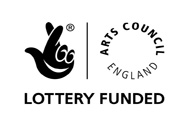
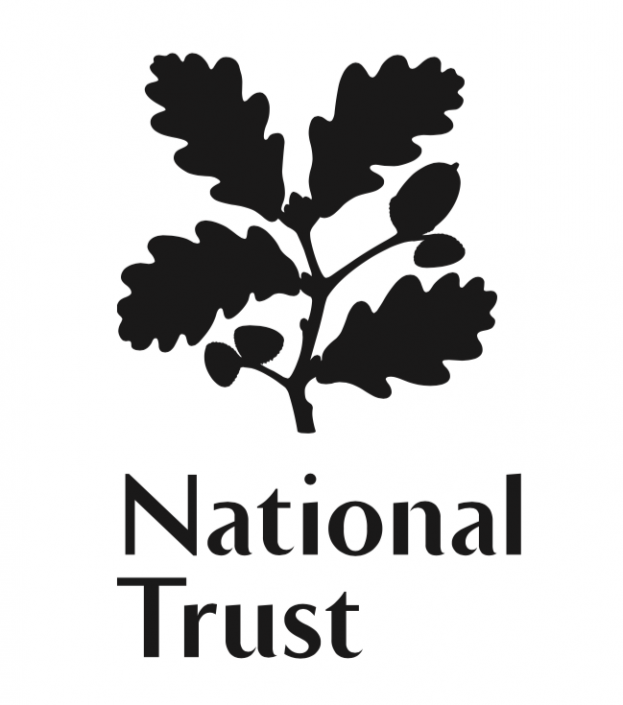
© Richard Bartle, all rights reserved.
